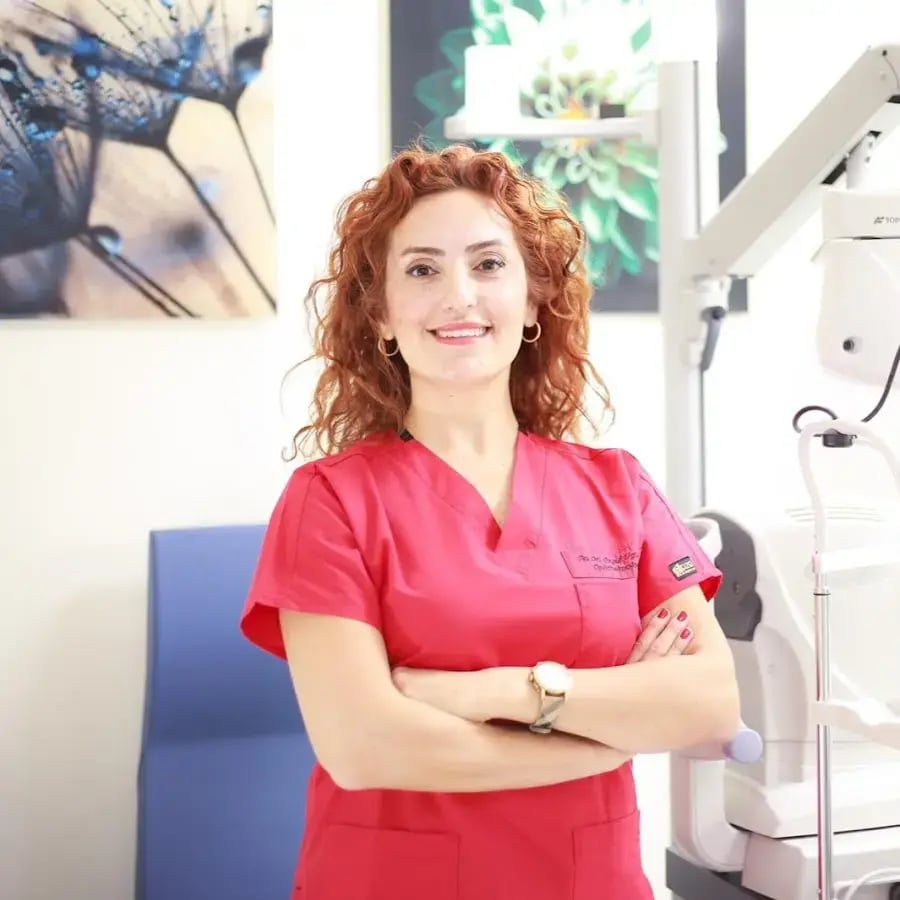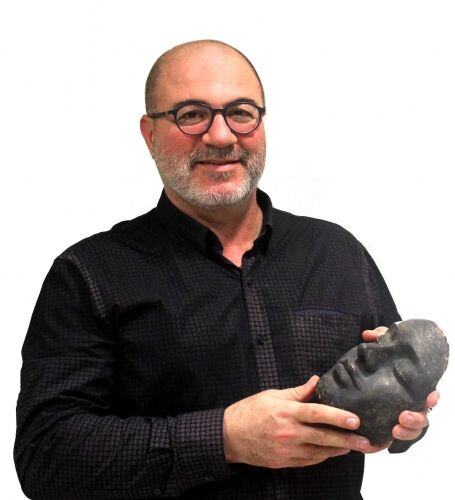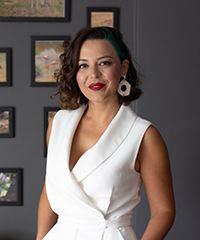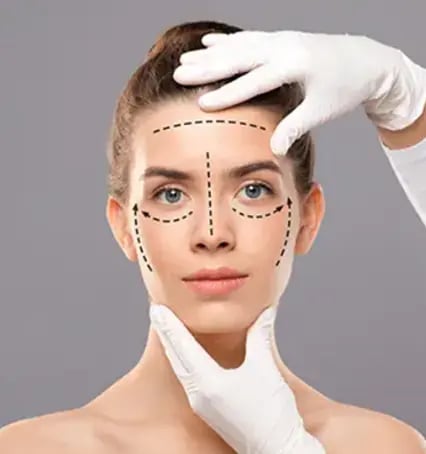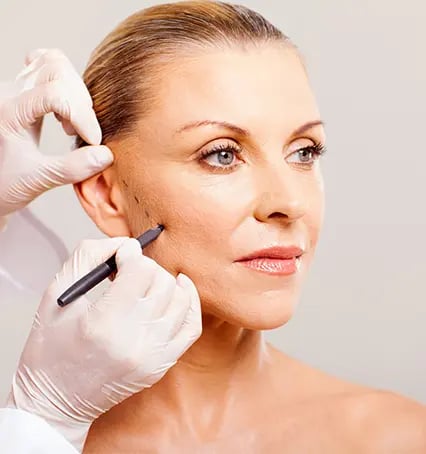Eyelid Surgery
Eyelid Surgery
- What is Eyelid Surgery?
- What are the Pros and Cons of an Eyelid Lift?
- How Much is Eyelid Surgery?
- Who is a Good Candidate for an Eyelid Lift?
- What is the Best Age to Have Eyelid Surgery?
- How to Prepare for Eyelid Surgery
- How is Eyelid Surgery Done?
- How Long Does Eyelid Surgery Take?
- Is Eyelid Surgery Dangerous?
- How Long Does It Take to Recover From Eyelid Surgery?
- How Long Does an Eyelid Lift Last?
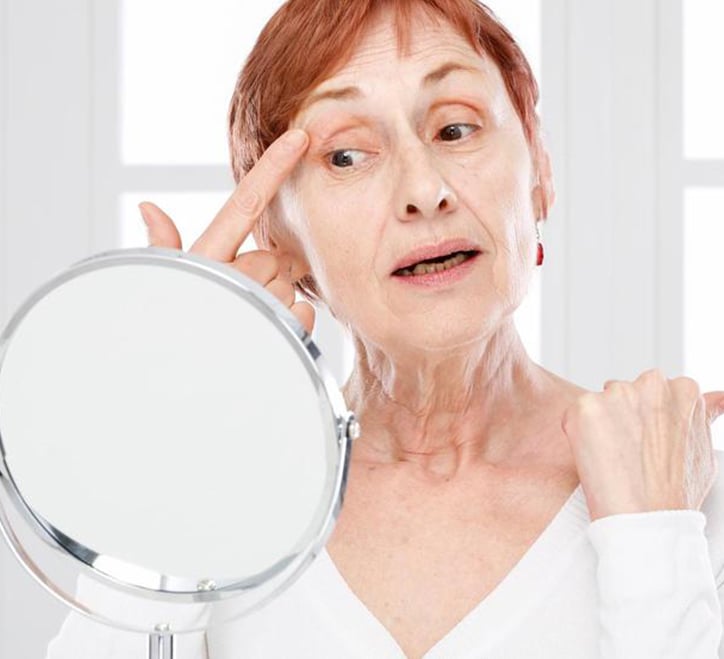
&Quick Facts
-
Satisfaction 94%
-
 Reviews 4
Reviews 4 -
 Average Cost $ 2000
Average Cost $ 2000 -
 Related Doctors 8
Related Doctors 8 -
 Treatment General or Local Anesthesia
Treatment General or Local Anesthesia -
 Recovery Time 1 Weeks
Recovery Time 1 Weeks -
 Question&Answer 10
Question&Answer 10

It is the result of eyelid surgery performed by Ekrem Keskin, MD. For reference purposes only, results may vary.
&Doctors
Most Active Doctors on NewMe
&Real Reviews
Most Popular Reviews
&Real Reviews
Real Reviews Q&A
Newme assisted; found my doctor, thrilled with results!
Newme assisted; found my doctor, thrilled with results!
&All About Eyelid Surgery: The Ultimate Guide to Blepharoplasty
&All About Non Surgical Butt Lift
What is Eyelid Surgery?
Eyelid surgery, or blepharoplasty, is a procedure to lift and reshape sagging eyelid skin. It can be done on the upper eyelids to fix droopy lids or on the lower eyelids to remove bags and tighten loose skin. Sometimes, doctors also move fat around the lower eyelids.
This surgery can be done alone or with other procedures like a facelift or brow lift. It doesn’t treat crow’s feet, but treatments like Botox can help with those lines. Double eyelid surgery is another type of eyelid surgery, often requested by people of Asian ethnicity, to create or refine an eyelid crease.
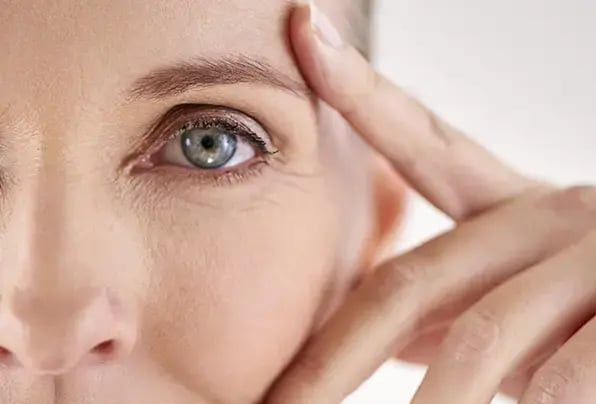
What are the Pros and Cons of an Eyelid Lift?
- Eyelid surgery makes you look refreshed and younger.
- It can improve your vision by removing excess skin.
- The surgery takes less than an hour and isn’t very painful.
- Recovery is usually about a week, with little pain.
- Scars are hidden in natural creases and fade over time.
- If done to improve vision, insurance might cover it.
- You’ll need 4-7 days to recover due to bruising and swelling.
- Dry eyes, swelling, and bruising are common side effects.
- There’s a risk of injuring eye muscles, nerves, and eyelashes.
- Removing too much skin can affect eye closure.
- Removing too much fat can cause hollow eyes, needing further treatment.
Our mission is to create a world where every investment in modern beauty is Worth It.
Let's keep in touch
Get updates of the treatments you are interested
How Much is Eyelid Surgery?
Eyelid surgery costs vary. In the US, it averages $4,950. In Turkey, it starts at $1,500; in the UK, it starts at £2,500.
The cost depends on your surgeon's experience, location, and the surgery's complexity. Lower eyelid surgery is usually more expensive than upper eyelid surgery because it can be more complex and might need general anesthesia.
Who is a Good Candidate for an Eyelid Lift?
Good candidates for eyelid surgery are healthy nonsmokers over 30. Ideal candidates for lower eyelid surgery have under-eye puffiness or bags and signs of aging, like loose skin or wrinkles. For upper eyelid surgery, good candidates have hooded, heavy, or droopy eyelids and may have eyelid asymmetry.
Doctors say changes in the forehead, eyebrow, and eyelid can contribute to eyelid hooding, so a combination of treatments might be needed. Your surgeon will review your medical history. Inform them if you have glaucoma, dry eye, high blood pressure, diabetes, or thyroid disorders.
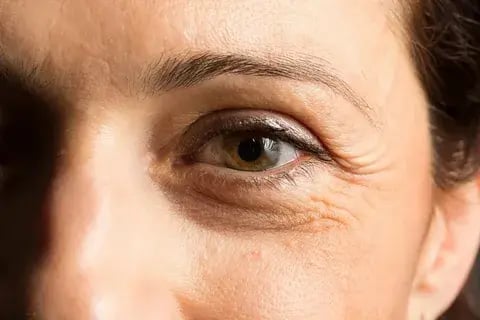
What is the Best Age to Have Eyelid Surgery?
How to Prepare for Eyelid Surgery
To prepare for eyelid surgery, first discuss your goals with your surgeon and ask any questions. Follow your doctor's pre-op instructions, which may include:
- Visiting your primary doctor for blood tests and a health check.
- Get a complete eye exam to check your vision and eye health.
- Taking eyelid photos for planning and insurance purposes.
- Adjusting your medications and stopping certain drugs like aspirin and ibuprofen two weeks before surgery.
- Quitting smoking and nicotine products at least a month before surgery.
- Picking up any necessary post-op medications.
- Arrange for someone to drive you to and from the surgery and stay with you the first night.
How is Eyelid Surgery Done?
Upper Blepharoplasty
For upper eyelid surgery, you'll get local anesthesia to numb the area. Your surgeon will mark the skin to see how much to remove. Then, they’ll make an incision along your natural eyelid crease and remove extra skin and sometimes a bit of fat. Afterward, they’ll stitch the eyelid back together.
Lower Blepharoplasty
Lower eyelid surgery is done with IV sedation or general anesthesia. It removes or repositions fat, reduces puffiness, and tightens loose skin. Incisions are made below or behind the lower lash line. Using the transconjunctival technique, incisions inside the eyelid leave no visible scar. This method repositions fat for long-term results and fewer complications.
How Long Does Eyelid Surgery Take?
Upper eyelid surgery takes 30 minutes to an hour. Lower eyelid surgery takes slightly longer unless only a transconjunctival approach is used. If fat transfer is done too, it adds about 30 minutes.
Since an eyelid lift is usually done as an outpatient procedure, you’ll need someone to drive you to and from the surgery center or hospital.

Is Eyelid Surgery Dangerous?
Eyelid surgery, or blepharoplasty, is generally safe with minimal side effects. However, like any surgery, it has risks and possible complications, including reactions to anesthesia or infection.
Risks and side effects for both upper and lower blepharoplasty include:
- Swelling, including chemosis (swelling of the lining of the eyeball)
- Bruising
- Bleeding
- Temporarily blurred vision (from a lubricating ointment on your eyes)
- Infection (watch for signs like pain, redness, pus, warmth, and fever)
You might also experience watery eyes, double vision, light sensitivity, or discomfort during recovery.
A 2013 study in the Journal of American Medicine Association Facial Plastic Surgery noted that dry eye problems can develop or become more noticeable after an eyelid lift. This can be treated with medicated eye drops.
It's important to have your eyes tested before surgery to check for any pre-existing dry eye. This doesn’t mean you can’t have surgery, but you might need to use eye drops beforehand, and your surgeon may take a more careful approach.
One of the rare but difficult complications is having too much skin removed, making it hard to fully close your eyes. Choosing an experienced surgeon who specializes in eyelid lifts can help reduce this risk.
To understand all potential risks, talk with your surgeon and disclose any medical conditions you have.
Our mission is to create a world where every investment in modern beauty is Worth It.
Let's keep in touch
Get updates of the treatments you are interested
How Long Does It Take to Recover From Eyelid Surgery?
Recovery from eyelid surgery usually takes 4 to 7 days. Some people might need a bit more time to feel comfortable going out. Dr. Kapadia advises taking two weeks off work, but many return after just one week. The worst part is typically the first 7–10 days, though pain is usually minimal.
Here's what to expect:
- Most bruising and swelling occur in the first week.
- If stitches are used, they are removed after one week.
- Use ice packs or cool compresses on your eyes.
- Sleep with your head elevated.
- Use prescribed eye drops and keep the area clean.
- Avoid aspirin and ibuprofen.
- No strenuous activities for one to two weeks.
- Avoid contact lenses for two weeks.
- Wear dark sunglasses to protect your eyes and help hide bruising.
Most swelling will go down in two weeks, but full results take up to six months.
How Long Does an Eyelid Lift Last?
What is Eyelid Surgery?
Eyelid surgery, or blepharoplasty, is a procedure to lift and reshape sagging eyelid skin. It can be done on the upper eyelids to fix droopy lids or on the lower eyelids to remove bags and tighten loose skin. Sometimes, doctors also move fat around the lower eyelids.
This surgery can be done alone or with other procedures like a facelift or brow lift. It doesn’t treat crow’s feet, but treatments like Botox can help with those lines. Double eyelid surgery is another type of eyelid surgery, often requested by people of Asian ethnicity, to create or refine an eyelid crease.

What are the Pros and Cons of an Eyelid Lift?
- Eyelid surgery makes you look refreshed and younger.
- It can improve your vision by removing excess skin.
- The surgery takes less than an hour and isn’t very painful.
- Recovery is usually about a week, with little pain.
- Scars are hidden in natural creases and fade over time.
- If done to improve vision, insurance might cover it.
- You’ll need 4-7 days to recover due to bruising and swelling.
- Dry eyes, swelling, and bruising are common side effects.
- There’s a risk of injuring eye muscles, nerves, and eyelashes.
- Removing too much skin can affect eye closure.
- Removing too much fat can cause hollow eyes, needing further treatment.
Our mission is to create a world where every investment in modern beauty is Worth It.
Let's keep in touch
Get updates of the treatments you are interested
How Much is Eyelid Surgery?
Eyelid surgery costs vary. In the US, it averages $4,950. In Turkey, it starts at $1,500; in the UK, it starts at £2,500.
The cost depends on your surgeon's experience, location, and the surgery's complexity. Lower eyelid surgery is usually more expensive than upper eyelid surgery because it can be more complex and might need general anesthesia.
Who is a Good Candidate for an Eyelid Lift?
Good candidates for eyelid surgery are healthy nonsmokers over 30. Ideal candidates for lower eyelid surgery have under-eye puffiness or bags and signs of aging, like loose skin or wrinkles. For upper eyelid surgery, good candidates have hooded, heavy, or droopy eyelids and may have eyelid asymmetry.
Doctors say changes in the forehead, eyebrow, and eyelid can contribute to eyelid hooding, so a combination of treatments might be needed. Your surgeon will review your medical history. Inform them if you have glaucoma, dry eye, high blood pressure, diabetes, or thyroid disorders.

What is the Best Age to Have Eyelid Surgery?
How to Prepare for Eyelid Surgery
To prepare for eyelid surgery, first discuss your goals with your surgeon and ask any questions. Follow your doctor's pre-op instructions, which may include:
- Visiting your primary doctor for blood tests and a health check.
- Get a complete eye exam to check your vision and eye health.
- Taking eyelid photos for planning and insurance purposes.
- Adjusting your medications and stopping certain drugs like aspirin and ibuprofen two weeks before surgery.
- Quitting smoking and nicotine products at least a month before surgery.
- Picking up any necessary post-op medications.
- Arrange for someone to drive you to and from the surgery and stay with you the first night.
How is Eyelid Surgery Done?
Upper Blepharoplasty
For upper eyelid surgery, you'll get local anesthesia to numb the area. Your surgeon will mark the skin to see how much to remove. Then, they’ll make an incision along your natural eyelid crease and remove extra skin and sometimes a bit of fat. Afterward, they’ll stitch the eyelid back together.
Lower Blepharoplasty
Lower eyelid surgery is done with IV sedation or general anesthesia. It removes or repositions fat, reduces puffiness, and tightens loose skin. Incisions are made below or behind the lower lash line. Using the transconjunctival technique, incisions inside the eyelid leave no visible scar. This method repositions fat for long-term results and fewer complications.
How Long Does Eyelid Surgery Take?
Upper eyelid surgery takes 30 minutes to an hour. Lower eyelid surgery takes slightly longer unless only a transconjunctival approach is used. If fat transfer is done too, it adds about 30 minutes.
Since an eyelid lift is usually done as an outpatient procedure, you’ll need someone to drive you to and from the surgery center or hospital.

Is Eyelid Surgery Dangerous?
Eyelid surgery, or blepharoplasty, is generally safe with minimal side effects. However, like any surgery, it has risks and possible complications, including reactions to anesthesia or infection.
Risks and side effects for both upper and lower blepharoplasty include:
- Swelling, including chemosis (swelling of the lining of the eyeball)
- Bruising
- Bleeding
- Temporarily blurred vision (from a lubricating ointment on your eyes)
- Infection (watch for signs like pain, redness, pus, warmth, and fever)
You might also experience watery eyes, double vision, light sensitivity, or discomfort during recovery.
A 2013 study in the Journal of American Medicine Association Facial Plastic Surgery noted that dry eye problems can develop or become more noticeable after an eyelid lift. This can be treated with medicated eye drops.
It's important to have your eyes tested before surgery to check for any pre-existing dry eye. This doesn’t mean you can’t have surgery, but you might need to use eye drops beforehand, and your surgeon may take a more careful approach.
One of the rare but difficult complications is having too much skin removed, making it hard to fully close your eyes. Choosing an experienced surgeon who specializes in eyelid lifts can help reduce this risk.
To understand all potential risks, talk with your surgeon and disclose any medical conditions you have.
Our mission is to create a world where every investment in modern beauty is Worth It.
Let's keep in touch
Get updates of the treatments you are interested
How Long Does It Take to Recover From Eyelid Surgery?
Recovery from eyelid surgery usually takes 4 to 7 days. Some people might need a bit more time to feel comfortable going out. Dr. Kapadia advises taking two weeks off work, but many return after just one week. The worst part is typically the first 7–10 days, though pain is usually minimal.
Here's what to expect:
- Most bruising and swelling occur in the first week.
- If stitches are used, they are removed after one week.
- Use ice packs or cool compresses on your eyes.
- Sleep with your head elevated.
- Use prescribed eye drops and keep the area clean.
- Avoid aspirin and ibuprofen.
- No strenuous activities for one to two weeks.
- Avoid contact lenses for two weeks.
- Wear dark sunglasses to protect your eyes and help hide bruising.
Most swelling will go down in two weeks, but full results take up to six months.



